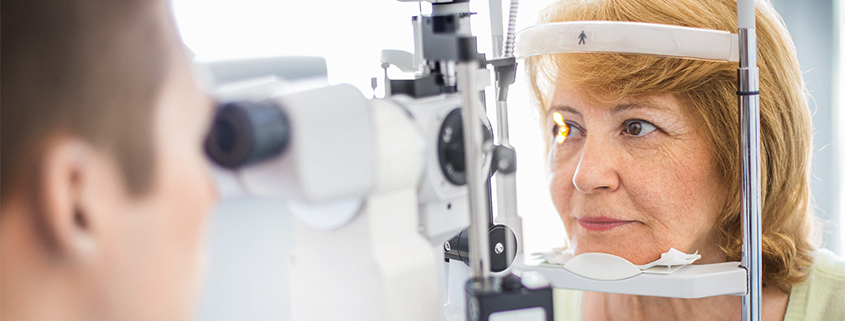Diabetic Eye Disease Awareness
According to the Centers for Disease Control and Prevention, diabetes is the leading cause of new cases of blindness in adults. Diabetic retinopathy is a general term for all disorders of the retina caused by diabetes.
Diabetic retinopathy can go undetected without a thorough eye exam. This is because it often has no symptoms in its early stages. As diabetic retinopathy progresses, you may notice the following symptoms:
- An increasing number of floaters
- Blurry vision
- Vision that changes from blurry to clear
- Blank or dark areas in your field of vision
- Poor night vision
- Colors appear faded or washed out
Diabetic retinopathy symptoms usually affect both eyes.
Diabetics are at risk for permanent vision damage and even blindness if diabetic retinopathy is left untreated. However, there are steps that can be taken to help prevent diabetic eye disease, including:
- Maintaining good blood sugar, blood pressure, and cholesterol control.
- Getting a comprehensive dilated eye exam and/or obtaining retinal photographs that are examined by an eye doctor at least once a year, or more often as recommended by the eye doctor.
- Women with diabetes prior to pregnancy should have a comprehensive dilated eye exam early in their pregnancy. The eye doctor may recommend additional exams during pregnancy.
- Keeping a healthy lifestyle that includes exercising regularly, not smoking, and following a healthy diet. Talk to a dietician about eating habits and a doctor before starting an exercise program.
Dr. Michael Vrabec of Valley Eye Associates says, “While diabetic retinopathy is a chronic disease, the good news is that by taking the necessary steps to manage the condition, including getting an annual eye exam, we can help to minimize the harmful effects on your vision.”
For more information about diabetic retinopathy, please visit the American Diabetes Association.

